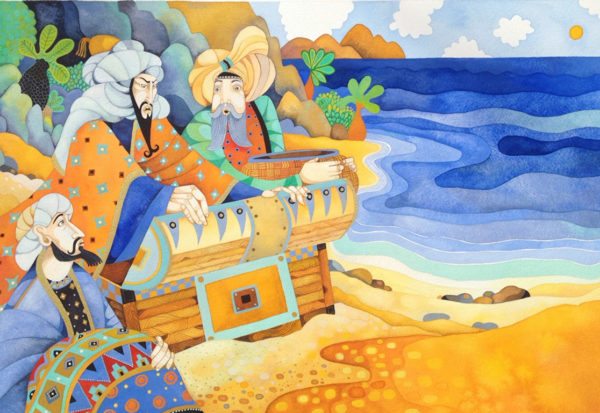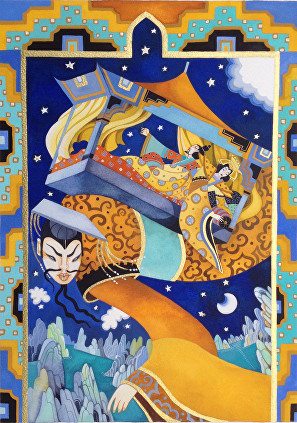
There have been several studies suggesting reading fairy tales to kids helps them develop a deeper understanding of the world around them, of human interactions, and of humanity at large and their place in it. Albert Einstein is often quoted as having said to do so is to give children the gift of being “more intelligent.”
There’s a bit of a snag, however, in that so many fairy tales are dark. Violent. Involve dead parents, evil witches, and a fair bit of sex. Some kids are ready for such topics earlier than others; some are never really ready. Some parents are uncomfortable relaying such things. How then, do we give our children the gift of fairy tales without terrorizing them or ourselves? To water the stories down too much is to kill their efficacy but to present some myths, legends, and fairy tales without any consideration of the age or maturity of the audience is foolhardy and ultimately likely to be off-putting for all concerned.
National Geographic, author Donna Jo Napoli, and illustrator Christina Balit have an excellent solution.
Tales from the Arabian Nights: Stories of Adventure, Magic, Love, and Betrayal is a wonderful introduction to the rich mythologies of the Middle East and Persia, relaying the tale of Scheherazade telling a story each night to preserve her life one more day and also many of the stories she told. They are tales about the power of words and stories on the human mind and imagination. The truth of humans needing stories as much as they need food and water and air, to entertain, to teach, to expand horizons otherwise restricted.
It flirts with danger and, yet, is absolutely appropriate for children.
Napoli doesn’t shy away from the violence inherent in these tales, nor from the realities of death and cruelty they often portray but she handles such topics deftly, leaving the essences of the morals, the nuances of culture and time, intact. Changing a word here and there (“romancing,” for example, instead of “having sex with”), however, helps to summon the appropriate emotions without banging anyone over the head with… well… banging, as the case may be. Curating the catalog of stories wisely and thoughtfully, she eases particular topics without altering the tone or soul of the tales nor diluting the urgency of Scheherazade’s predicament.

Balit’s art is a gorgeous blend of traditional Islamic and Persian styles and modern graphic design. The shapes and figures are kinetic and the colors bold and striking. The combination of full page spreads and smaller geometric designs in the margins keeps kids engaged, even on text heavy pages and gives them an even richer sense of a culture they may never have experienced before and which the may never have the opportunity to experience outside of a museum.
Scattered throughout the stories are cultural sidebars on a variety of topics: sacred numbers, prayer times, laws of hospitality, the tradition of veils, and even the apparently exceptional mental health care provided in the early Muslim world (that last of which was new information for me). The snippets are short and succinct but very informative, expanding on an element of the story beside which they appear (more integrated learning, yay!). There is also a bibliography at the back of the book should the kids, or you, find there’s something you’d like to learn more about (it also speaks to the breadth of research Napoli did in preparation for the book, both in English and Arabic, recommending Tales From The Arabian Nights as a possible school project source should the need arise).

There’s a two-page map spread of the Middle East as well, which lists both the ancient and modern place-names to assist kids and parents both in figuring out where the myths happened, where they happened in relation to one another, and how current events in the Middle East play out around, and sometimes because of, that which happened long ago.
My husband read Tales from the Arabian Nights to the kids at bedtimes several nights in a row and they were absolutely enraptured (we started them on various mythologies pretty much in the womb). I keep opening the book explore the world through the art and waxing poetic to myself about hours spent wandering the Middle Eastern Galleries at the National Gallery in DC while a student at George Washington (and an art history minor).
A beautiful introduction to Middle Eastern mythology and culture, and an excellent gateway book to the Rubaiyat of Omar Khayyam, I really can’t recommend this book highly enough.

Tales From the Arabian Knights: Stories of Adventure, Magic, Love, and Betrayal written by Donna Jo Napoli and illustrated by Christina Balit (National Geographic) is available now.
Disclaimer: National Geographic provided GeekMom with a review copy of this book.




